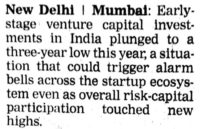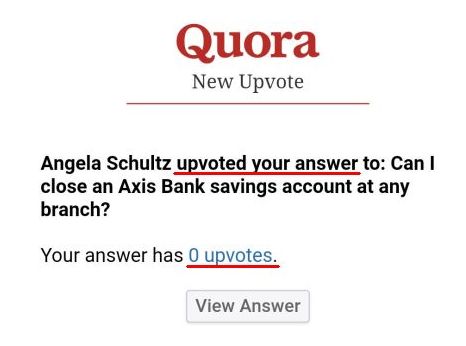In Feature Or Bug – Facebook & Tideplus, we saw two cases of #FeatureOrBug, one of which was favorable to the consumer, and the other, neutral.
I’ve subsequently come across many more favorable / neutral cases of #FeatureOrBug. I thought I’ll cover them before fulfilling the promise I made at the end of the last post to write about an unfavorable #FeatureOrBug.
Here goes the second installment of my #FeatureOrBug list (For the sake of continuity, I’m appending it to the list given in my previous post.)
#3. HOUSING.COM LISTING
 I listed my apartment on Housing.com around six months ago. A month later, it was rented out. I informed the company accordingly. However, it has still not pulled down my listing.
I listed my apartment on Housing.com around six months ago. A month later, it was rented out. I informed the company accordingly. However, it has still not pulled down my listing.
On the face of it, this could appear to be a Bug caused by oversight or apathy.
But, on second thoughts, by letting my listing stay, Housing earns extra pageviews and, thus, additional advertising revenues. So, this could be a Feature.
But, it’s a shortsighted feature, at best. Because the portal loses credibility by making people waste their time pursuing expired listings.
It also goes against the charter of Housing.com. As I highlighted in Can Something Be Too Frictionless?, the startup founded by a bunch of my alumni from IIT Bombay differentiated itself from the other real estate portals of that era by being obsessed over data quality. Knowing fully well that prospective tenants and buyers get turned off by pursuing an apartment that has already been rented / sold, Housing.com would actively follow up with landlords to inquire whether their apartment was still available and made it very easy for landlords to take down a listing by simply giving a “missed call”. That way, the company made sure that the data on its portal was always refreshed and valid.
That was then.
Now the company doesn’t seem to care about the quality of data.
For old times sake, I’m doing its job by sending an email to everyone who contacts me, informing them that my apartment has been rented out and tipping them off to other rentable properties in the same housing complex.
#4. LINKEDIN SEND INVITE
Inviters are prompted to add a personal note while sending an invite on the desktop version of LinkedIn.
In the LinkedIn mobile app, this prompt is missing.
On first blush, as Dr Aniruddha Malpani commented, this might appear to be a Bug in the mobile app of LinkedIn.
But, on closer examination, this could be a Feature.
Let me explain why.
In its early days, LinkedIn set the following three conditions for sending an Invite:
- Send Invites only to people you know
- State your relationship with the Invitee
- Add a personal note to your Invite.
Over time, LinkedIn dropped the first condition. You could send Invites to anyone in your second or third degree network.
Then it dropped the second condition. You no longer had to select options like “did business together” and “studied in same school / college” to amplify your relationship with the Invitee.
Now, it has made the personal note optional.
On the desktop version of LinkedIn, you see the following screen while sending an Invite.
You can add a personal note by clicking the Add a note button but you can also skip it by clicking the Send now button. Notice also how the Send now button is the highlighted option. On the mobile app, you don’t even see the Add a note button in the regular workflow – it appears only if you tap the menu button.
The trend is clear. LinkedIn has reduced the friction for sending invites over the years. This has enhanced the UX for Inviters, especially the raising number of whom that access the application from mobile devices, which has in turn increased the number of Invites Sent and boosted the conversion rate of Visitors to Invites Sent. These two metrics boost pageviews and drive additional advertising revenues for LinkedIn. So it’s clearly a Feature.
On the Invitee’s side, the current way of working of the Send Invite feature has created a greater volume of Invites Received and a higher percentage of Invites without personal notes. Invitees respond in one of the following three ways:
- They feel highly wanted because they get so many Invites and accept all of them without further thought. Both the volume of Invites Accepted and conversion rate of Invites Received to Accepted goes up
- They ignore all Invites lacking a personal note. Both the volume of Invites Accepted and conversion rate of Invites Received to Accepted goes down
- They click through to the profile of the Inviter and otherwise put in the extra efforts to decide whether to accept the Invite or not.
Case 1 is favorable to LinkedIn. Case 2 is unfavorable to LinkedIn. It’s difficult to predict the impact of Case 3. Based on my personal observation, Case 1 outnumbers 2 and 3.
Therefore, this is a Feature.
#5. STARBUCKS NAME MISSPELLING
 Starbucks misspells my name regularly. With a name like mine, Starbucks is not the only one. So I shrug it off as a Bug.
Starbucks misspells my name regularly. With a name like mine, Starbucks is not the only one. So I shrug it off as a Bug.
But, according to Mental Floss, “Starbucks misspells names on purpose”. According to a team that confirmed this hypothesis by using a very common name (Molly), “The more ridiculous the botched name, the more likely consumers are to share a photo on social media.”
Since free publicity is a benefit, misspelling names is likely a Feature.
#6. ANGEL INVESTMENTS GOING DOWN
 According to Times of India, startups are struggling to raise funds in a year when availability of VC funding reached an all-time high. This may appear to be a Bug to a lay person.
According to Times of India, startups are struggling to raise funds in a year when availability of VC funding reached an all-time high. This may appear to be a Bug to a lay person.
But, as I highlighted in When A Business Is VC Funded, VC Is The Business, risk capital is invested across many distinct stages. Depending upon market conditions, some stages could be flush with funds whereas others could be starved of funds – at the same time.
So, this is clearly a Feature of the VC investment model.
#7. MISCELLANEOUS
I’m giving below a few more examples of #FeatureOrBug – without my explanatory remarks. I’ll leave it to readers to decide whether they’re Features or Bugs.
7.1
Feature or Bug? iPhoneX ensures that Fanboys will shave everyday – via @WSJ https://t.co/ysuWJbeIax
— GTM360 (@GTM360) October 6, 2017
7.2
Feature or bug? @disqus & I can see 3 comments but @Digiday's button shows only 2 comments! pic.twitter.com/k8DBwHoXVZ
— GTM360 (@GTM360) June 13, 2016
7.3
Is high rejection rate of credit card applications of married women using maiden name a feature or bug in this bank's Big Data s/w? pic.twitter.com/SRGXDhq0sU
— GTM360 (@GTM360) October 19, 2016
Before I conclude, let me share one instance of #FeatureOrBug that boggles my mind.
In the same email, Quora tells me that someone has upvoted my answer but reports 0 upvotes for my answer.
This is a Bug for an old company that has many legacy systems.
Like my old bank in Germany. If I had a balance of €1000 and withdrew €200 from its ATM, the ATM’s display would continue to show a balance of €1000 even after it dispensed the cash. My correct balance of €800 would be shown only in the paper statement that spewed out of the statement printing machine kept adjacent to the ATM. Apparently, the ATM switch was refreshed by a mainframe batch job running at midnight whereas the statement printing machine got the balance data in realtime from another system. Ergo this is a Bug, and one that can’t be fixed so easily.
But Quora is a new-age Internet company. It shouldn’t be using any legacy systems. Then why does it exhibit an issue that appears to be a Bug? Even 20 year old Indian banks never exhibited the kind of discrepancy that my German bank did.
Or is this really a Feature masquerading as a Bug for reasons that I’m unable to fathom?
I know Quora is the best place to ask questions but I’m not sure if it allows self-referential questions!
So I’m turning to my own blog.
If any of you has a clue about what’s happening here, please share your thoughts in the comments below.


